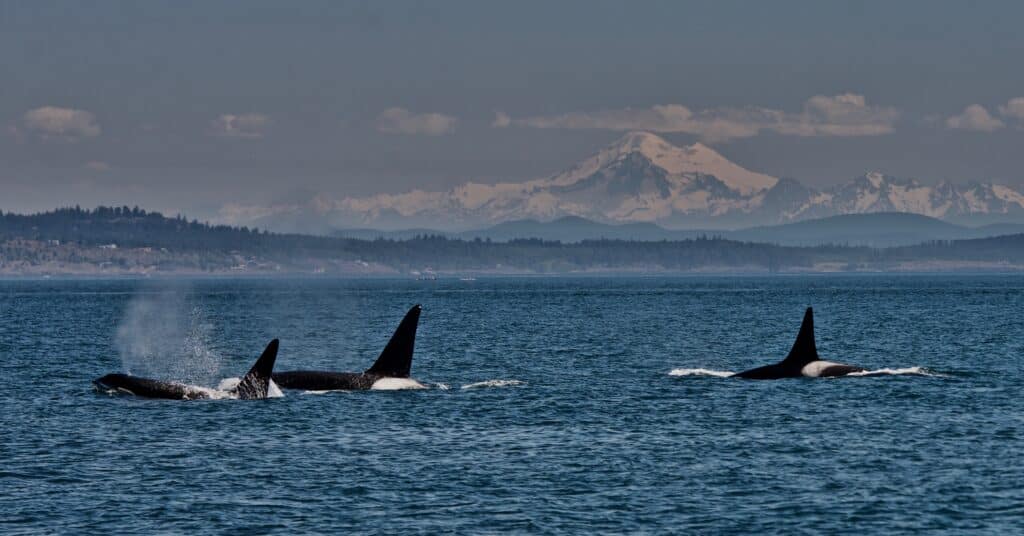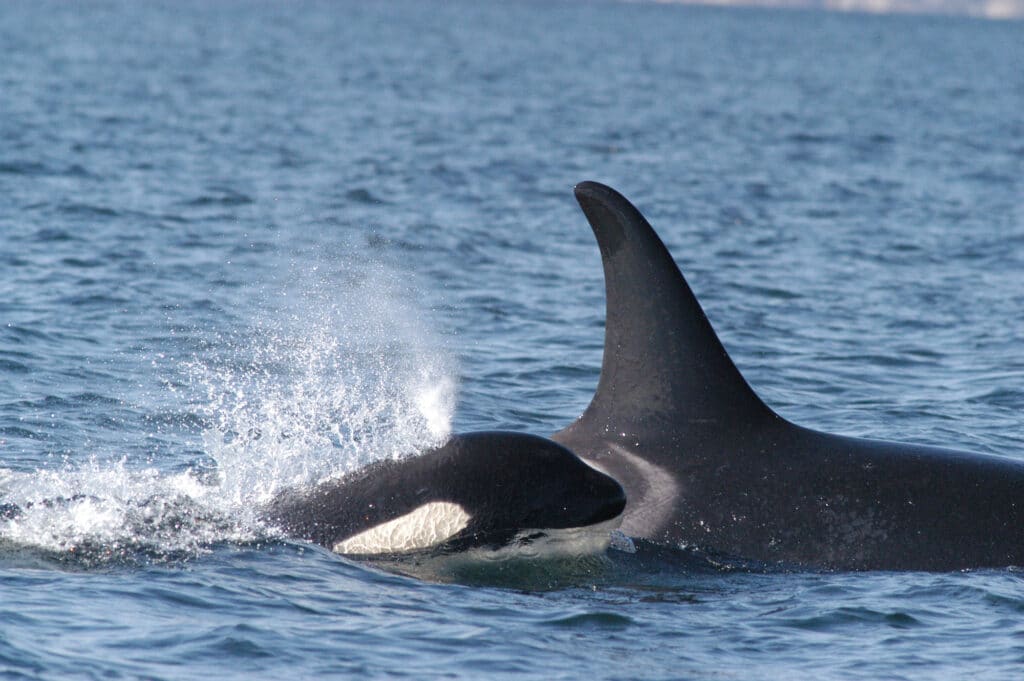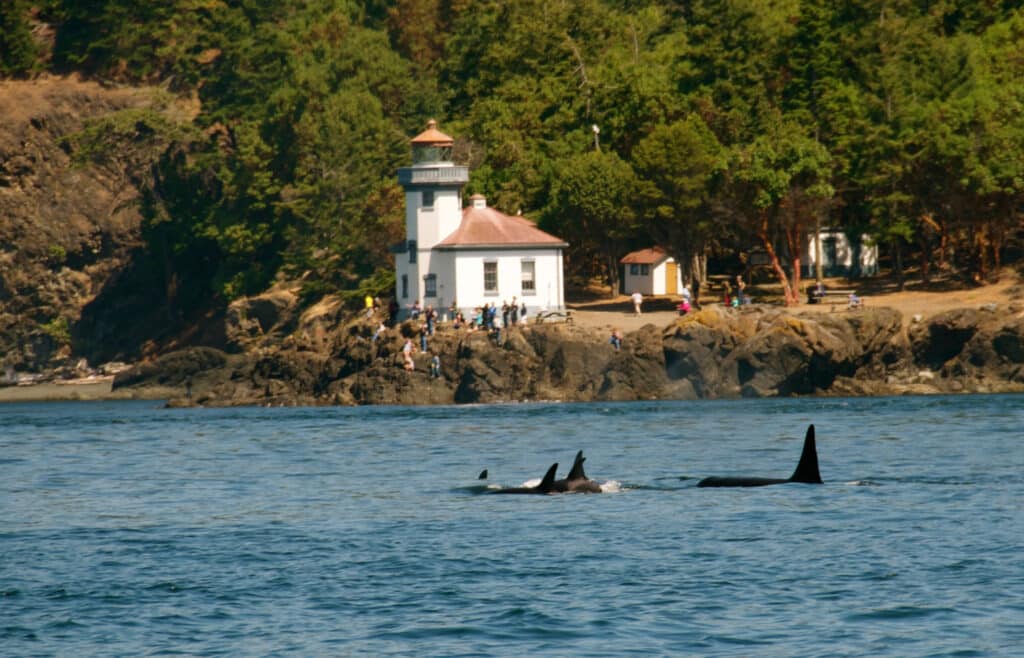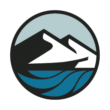by Alex Gradwohl, Program Director.
This is the second of a two-part series about Orca Action Month. Head over to our friends at the Mountains to Sound Greenway National Heritage Area for part one.

If you’ve ever found yourself on or near Washington’s waters, chances are you’ve spent some time searching the waters for that most iconic of marine residents: the orca. Treasured for their cultural importance to coastal Tribes, their striking beauty, and their importance to our marine ecosystem, orcas are the true celebrities of Washington’s maritime world—and a big piece of our water-based story. Unfortunately, these killer whales are also among the most at-risk marine mammals on Earth.
June is Orca Action Month in Washington, a month to celebrate and increase awareness of orcas, what they’re doing, and how we can help them thrive. “It’s about getting all the different people who love orcas together—the researchers and elected officials and everybody—to celebrate how great it is that we live in this place with these whales and also do what we can to help them,” says Orca Network Educator and Coordinator Stephanie Raymond.
Stephanie and her colleagues work to connect the people and whales of the Pacific Northwest by advocating for our water-based neighbors, educating folks about the challenges orcas face, and empowering communities to take action to protect whales. With programs like the Whale Sighting Network and Ferry Naturalist program, the Orca Network also turns orca enthusiasts into community scientists.

Washington is home to two types of orcas: Bigg’s or Transient killer whales and Southern Resident killer whales. While Bigg’s killer whales are doing well, Southern Resident killer whales—divided into three family groups or “pods” labeled J,K, and L—are endangered. In decades past, the Southern Resident population was severely reduced by the killing and capture of orcas for marine parks. Although this practice was banned by the 1972 Marine Mammal Protection Act, the population continues to struggle. “There are only 73 of these individuals left,” says Stephanie. “So, it’s a very challenged population.”
So, what can you do to help these iconic creatures? Stephanie and the Orca Network have some tips.
Protect salmon habitats.
Reduced access to food is a big threat to our Southern Residents. Bigg’s killer whales are mammal eaters, which means they have a wider variety of food to choose from. But Southern Residents prefer salmon—particularly Chinook salmon. As Chinook populations decline due to loss of habitat, climate change, blocked stream passages, and other causes, orcas are also heavily impacted.
Stephanie recommends learning about the salmon life cycle to better understand the impact that individual actions can have on the orcas’ favorite food group. “Conservation practices like conserving resources, using public transportation, planting trees, and participating in volunteer projects can make a difference,” says Stephanie. You can read more about the relationship between salmon and orcas—and find ways to contribute to the conservation of salmon habitats—from our friends at the Mountains to Sound Greenway National Heritage Area in part one of this series.
Prevent runoff of harmful chemicals.
Pollution and runoff into Puget Sound also pose a threat to salmon and orcas, damaging the waters they call home. While runoff is a complex issue, there are certain actions we can take to reduce our own contributions. “Whatever you’re putting into the water, indoors or outdoors, has an impact,” Stephanie says. To lessen your impact, she recommends:
- Making sure that you’re cleaning up pet waste outside.
- Never washing your car on the sidewalk—use a commercial car wash instead.
- Avoiding use of pesticides and herbicides in your garden and lawn.
- Making sure your car tires are fully inflated to avoid tire erosion and quickly fixing oil leaks.
- Using mass transit, carpooling, or biking when possible.
Reduce vessel noise and disturbance when you’re on the water.
Noise and other disturbances from vessels create even more problems for Southern Residents. Vessel noise discourages orcas from foraging—particularly for females, who need plenty of fish to sustain pregnancies. Less foraging means less food for hungry orcas.
“If you’re a recreational boater, you should take the time to educate yourself about the regulations,” Stephanie recommends. Being whale wise includes learning how to judge distance over water. In United States waters, boaters must maintain a 300-yard distance from either side of Southern Residents and a 400-yard distance from the path in front of or behind them. Because faster vessels make louder noises, boaters must also reduce their speed to under seven knots within ½ nautical miles of a Southern Resident, and should turn off their engines if whales appear within 300 yards. It’s important for both recreational boaters and those calling in violations to fully understand the laws, since enforcement resources are very limited.
“It’s really exciting when you encounter a whale out there!” says Stephanie. “I mean, who doesn’t want to see orcas, right? It’s an amazing experience every time…but it’s also an opportunity to really just take a deep breath and, you know, slow your boat down. Slowing down and enjoying the moment and letting the whales do what they’re going to do is better than trying to leapfrog ahead of them, which is completely against the rules, or otherwise seeking out a closer encounter.”

You can learn more about how to be a whale wise boater from the Orca Network’s “Share the Water” webinar series. The Orca Network also offers free presentations for area yacht clubs, marinas, or boating groups.
“It doesn’t take a lot to recover these populations,” Stephanie explains. “If everybody did what they could when they could, the resilience is there, and we will see recovery. We are seeing some improvements in certain places. So, we know that it works.” Find more actions you can take to help protect orcas at www.orcamonth.com/act.


